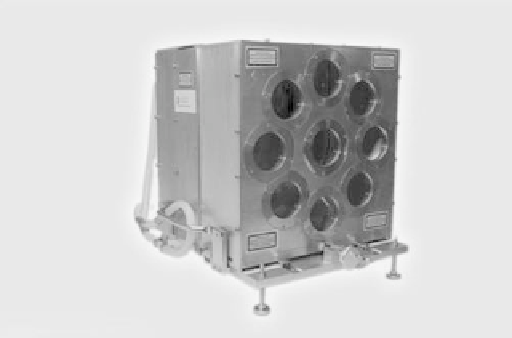Biomedical Engineering Reference
In-Depth Information
FIGURE 2.40
Nine-VCSEL laser illuminator.
2.12.1 Introduction
VCSELs are a relatively recent type of semiconductor laser. These were first
invented in the mid-1980s. Very soon, they gained the reputation as a supe-
rior technology for short reach applications such as fiber channel, Ethernet,
and intrasystems links. Within the first 2 years of commercial availability
(1996), VCSELs became the technology of choice for short range datacom
and local area networks, effectively displacing edge-emitter lasers. Mentzer,
Naghski, and a team of IBM researchers developed the first VCSEL-based
parallel 12-channel fiber-optic data link [93]. This success was mainly due to
the VCSEL's lower manufacturing costs and higher reliability compared to
edge emitters.
PO developed the key technologies resulting in the world's highest
power single-VCSEL devices and 2-D arrays, demonstrating single devices
with >5 W CW output power and large 2-D arrays with >230 W CW output
power. They made single-mode devices of 1 W output power and single-
mode arrays with power of >100 W, which are coupled to 100u, 0.22NA fiber.
The highest wall plug efficiency of these devices and arrays is 56%. Arrays
delivered 1 kW/cm
2
in CW operation and 4.2 kW/cm
2
in QCW operation. PO
participated in the DARPA-SHEDS program, whose main objective was to
improve laser diode power conversion efficiency.
2.12.2 VCSEL Structure
Semiconductor lasers consist of layers of semiconductor material grown on
top of each other on a substrate (the “epi”). For VCSELs and edge emitters,
this growth is typically done in an MBE or MOCVD growth reactor. The

Search WWH ::

Custom Search